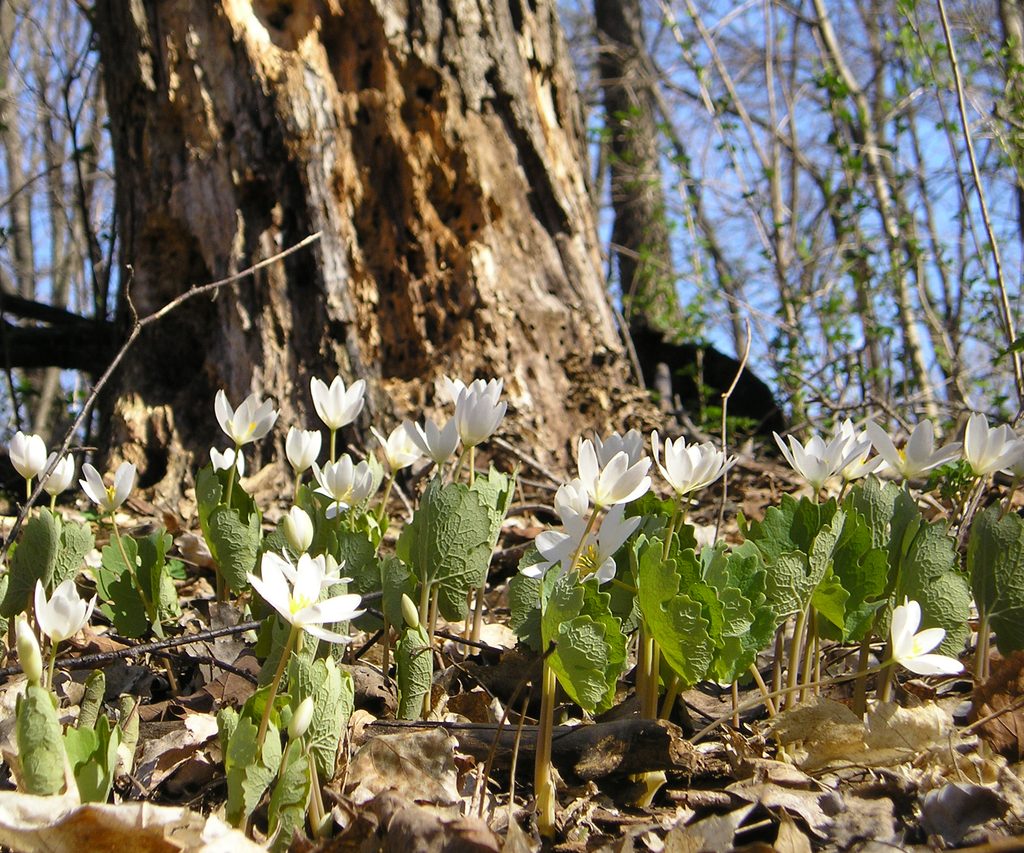Despite the unexpected snow this last week, spring is still on its way! Many forest wildflowers in the Arb have adaptations to deal with these kinds of weather disruptions, and are able to start blooming even when it’s more chilly, taking advantage of the available light before the trees above begin to sprout leaves. These early bloomers are also very important to the native pollinators, such as our native bee populations.
You will see many wildflowers beginning to sprout on the ground if you look carefully. Bloodroot is one of these early bloomers, and can be recognized from its white flowers, red roots and blood-red stem fluids. False Rue Anemone can be recognized for its white five-part flowers and yellow stamens, the shafts sticking out from the flower where the pollen is located. Canadian Wild Ginger can be recognized for its heart or kidney shaped basal leaves and its red flowers. It is not related to the ginger used in cooking. Dutchman’s Breeches has stalked white or pink flowers and frilly leaflets. White Trout Lily has white flowers pulled back from its yellow stamens, and grows in huge colonies. There are three species of Trout Lily in Minnesota, but you are most likely to see the white species. There are many others beginning to sprout to identify, too! Using a native wildflower guide or an app like iNaturalist or Seek is a good way to become acquainted with the many species.
Unfortunately, these wildflowers are constantly competing with non-native invasive species, such as honeysuckle and buckthorn, which block out light sources, as well as Siberian Squill, a purple wildflower that spreads rapidly and takes up available space on the forest floor. The best places to witness these beauties are in Best Woods in the Northeast corner of the lower Arb, and in Stork Forest in the south end of the Upper Arb.
–Alec Leonetti ‘22, for the Cole Student Naturalists

Add a comment